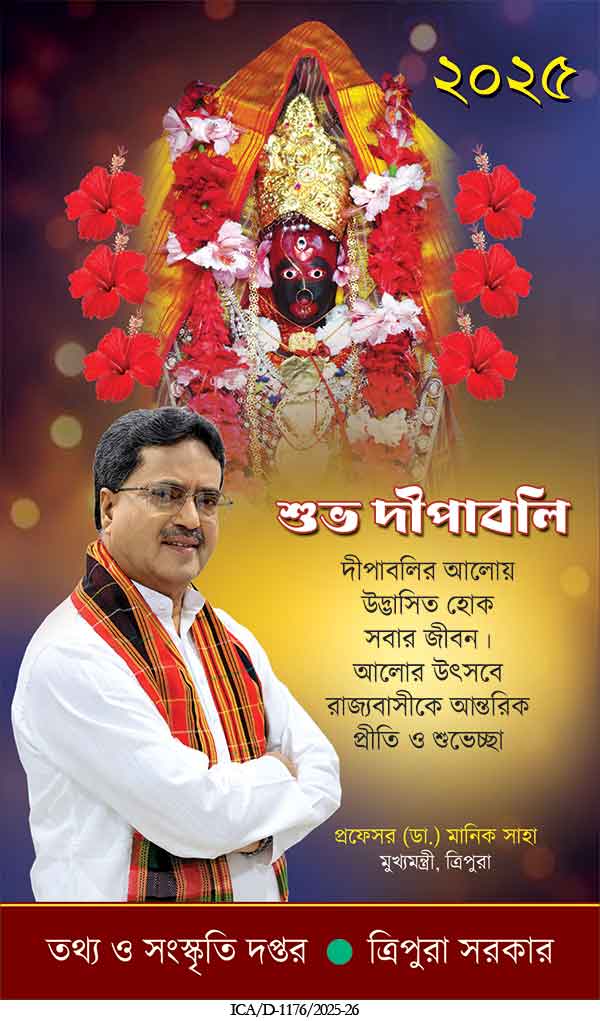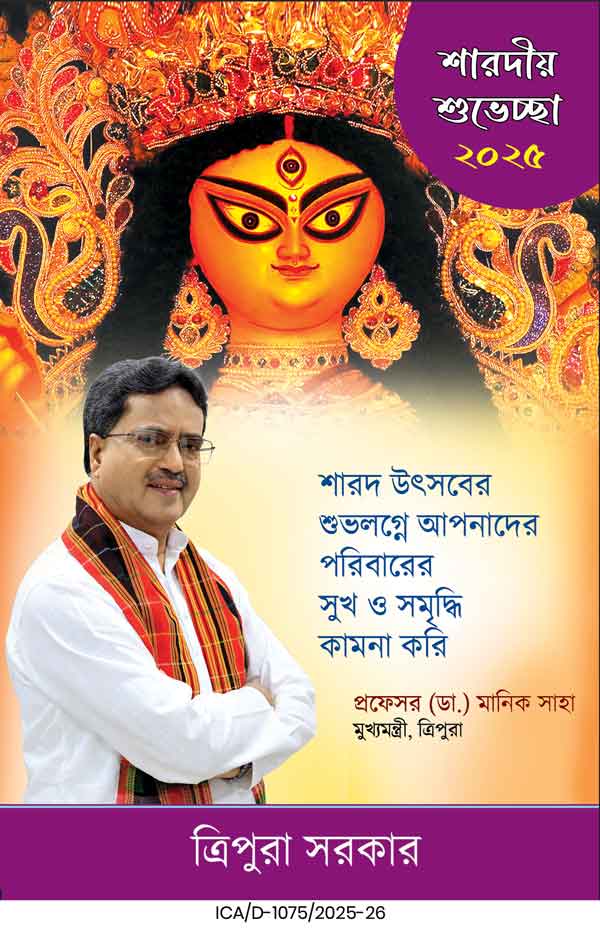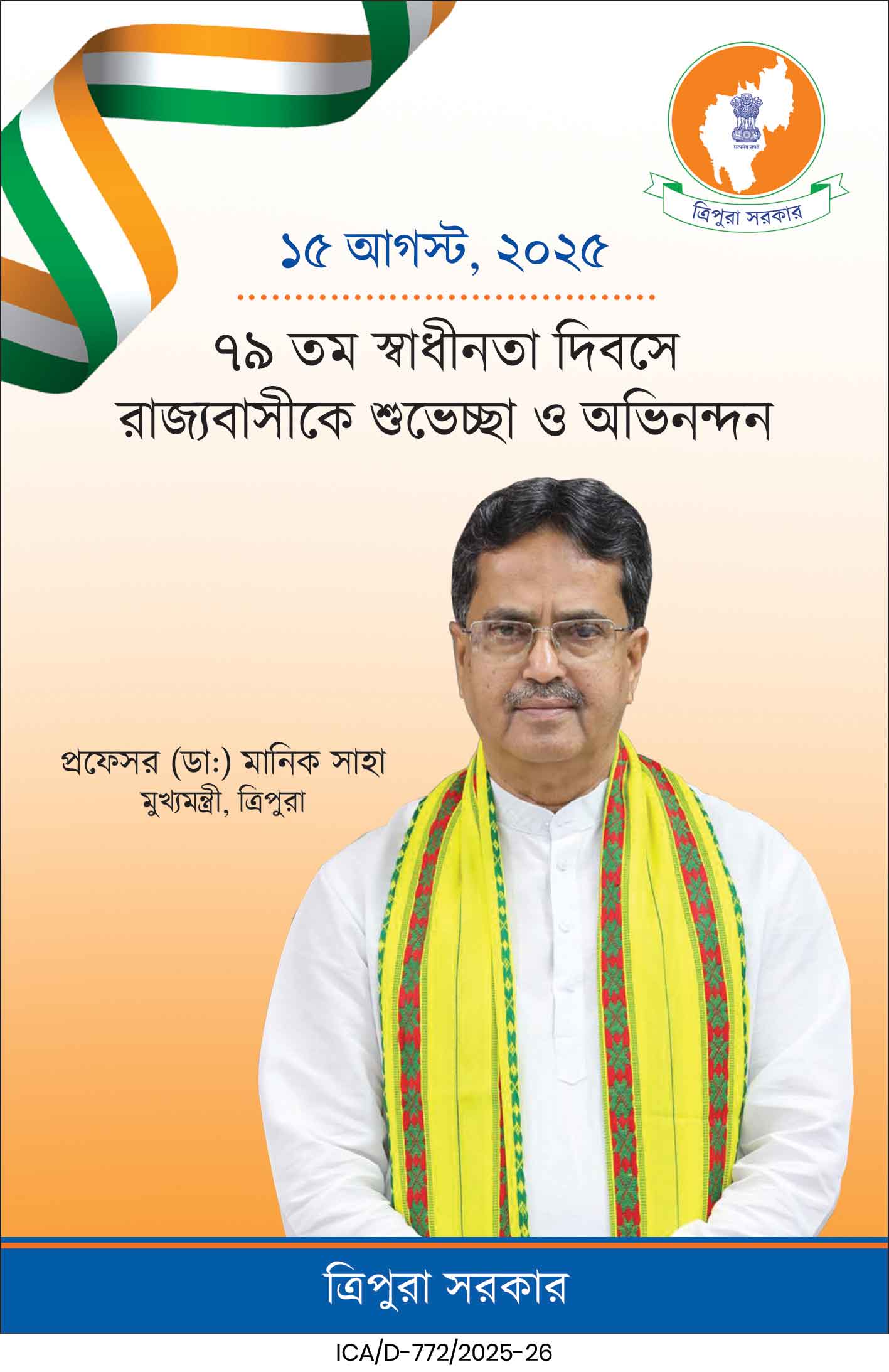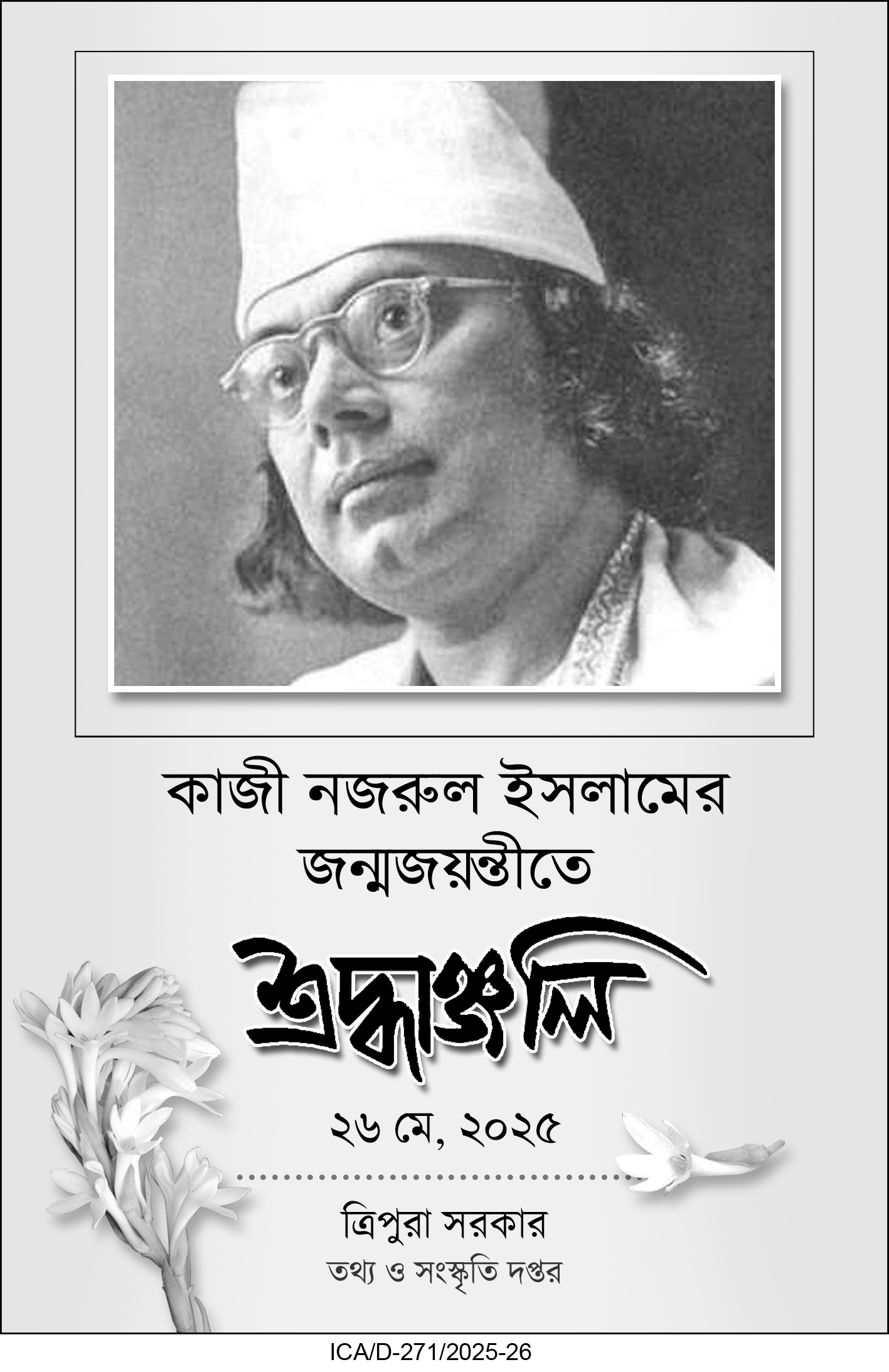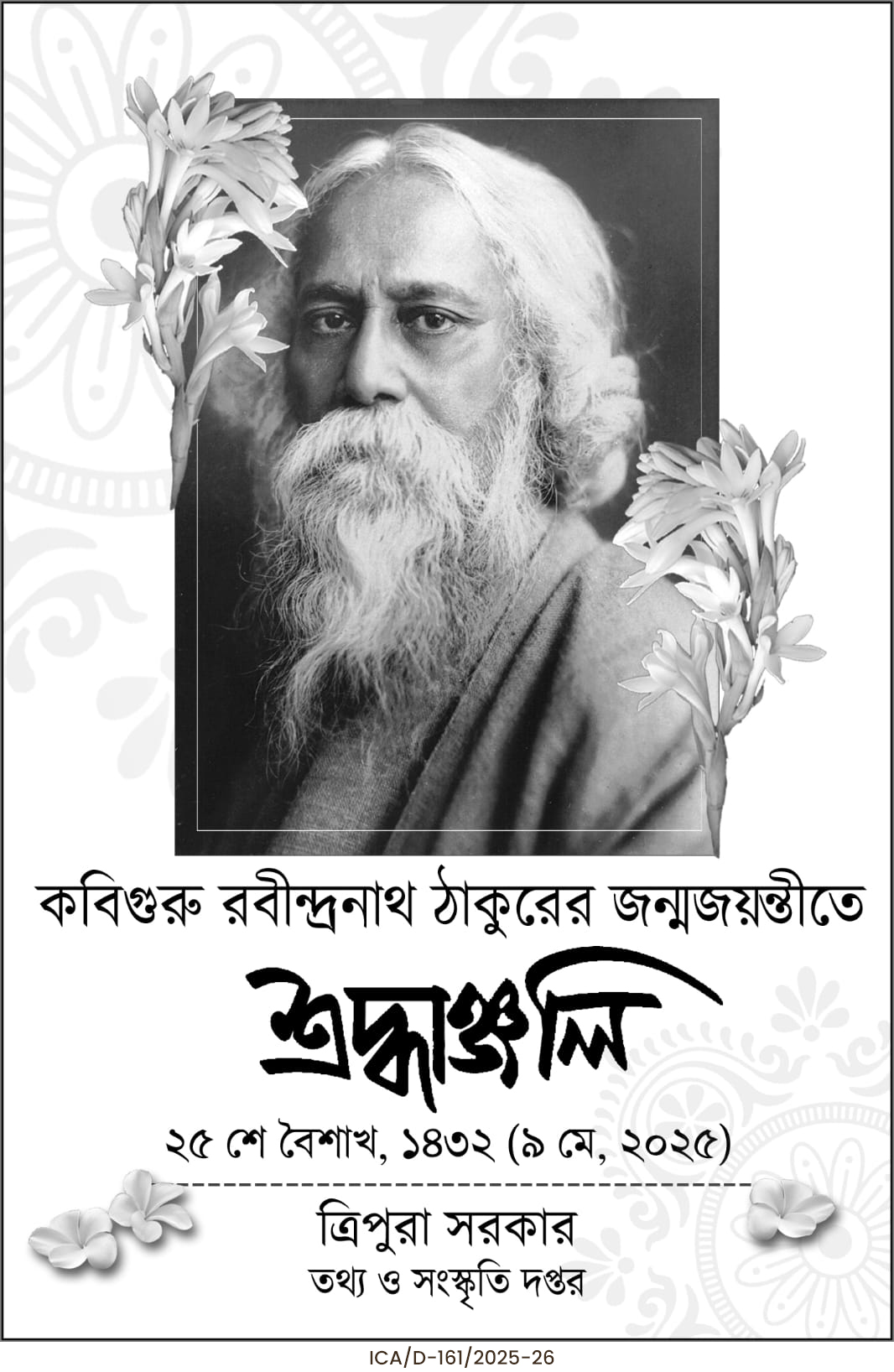

There is an evident endeavour on the part of the Tripura government and also other stake holders to ensure that Tourism Industry of the state becomes a key driver of socio-economic progress, of new enterprises, of new jobs –of new collaborations and alliances with the passage of time. Essentially an effort for ‘going global’ with domestic and international tourists in mind, it seeks to explore and utilize new areas for ‘sale’ and also to monetize not only extraordinary beauties, landscapes, archaeological splendours, heritage or flora and fauna etc of the state but also to display and showcase—and share too- the source of pride of the local, indigenous communities and in turn preserve their history and cultural heritage. The latest addition in this regard is engagement of Sourav Ganguly as the Brand Ambassador. This was an important step which was long been felt missing.
All then are expected to infuse the ‘tourist money’ into the state’s economy effectively and meaningfully.
However, one of the most important parts of the huge and multifaceted tourism development activities is Advertising and Marketing which include primarily Branding, Alliances with new and different types of partners, Outreach, Channel Developments and Sales.
And here comes the ‘Logo’ of the Tripura tourism.
Any tourism ‘Logo’ in all intents and purposes reflects the seriousness, inherent potential, prospects, possibilities and future of the tourism sector that is always on the move by expanding horizon and breaking the boundaries. It is the first thing that the global audience notices and gets the hints of the ‘experience’ that is in store if he or she comes here. It is the first thing that encapsulates the entire ‘Tourism sector’ for tourist -domestic or international, middle class or high end. The Logo is not always expected to be very ‘eloquent’—or obvious– but often ‘subtle’ and indicative to act as a trigger to incite ‘curiosity’.
But, unfortunately, the Tripura Tourism Logo is a serious disappointment.
Have a close look at it, and consider.
Loaded with too much of paint works it is complex and cumbersome sans any focal message to the audience. Too much use of too many bright colours- varied shades of red, yellow and pink – has made it also a bit ‘effeminate’. While the logo has been created defying the basics of logo designing, salt is added to eye sore by an ‘unexplained Flag’ flying high on top of the logo–over the ‘mountains’ beyond the Alpine range. (Do we have mountains of that scale in Tripura? Do we have Alpine range in Tripura ? No. We have hills ..but the depiction of snow clapped mountains appears misleading for the tourists)
That-the flag- makes it funny, too. An eyesore.
And, yes, the tail of the Spectacle Monkey, how big it is? Just have a look , again.
First thing first, the creator of this logo seemed to have confused ‘illustration’ with a ‘logo’—which is essentially a ‘symbol’ that effectively and by nature entirely represents the brand-here tourism of Tripura.
A logo is expected to be sharp, crisp, strong but at the same time easy, simple to understand and relate—and most importantly it must be stimulating. The fundamental character of a logo is to ‘symbolically’ encapsulate, articulate and emphasize the very essence of the subject- here Tourism in Tripura.
It has miserably failed in all these aforesaid basics.
Here the logo has evidently sought to incorporate pictorial subjects that are popular in nature, ostensibly to reflect, or more precisely, to tell the audience about Tripura many things – about its hills or monkeys, temples or pineapples etc. But in the process and pattern, as it appears, the creator has followed the all familiar formulae of ‘illustration’. This is no doubt a good ‘illustration’ but the end product is at best a collage of popular subjects like pineapple, Unakoti bas relief, Matabari temple, Spectacle monkey, a small deer, a tong ghor or for that matter a tribal lady ( And she faces outwardly thus making the ‘map’ oddly ‘open’ and thus imbalanced).
While a tourism logo is expected to carry a central concept reflective of the core essence of the state’s uniqueness and its specialty, depiction of too many figures is not only unsettling but also disruptive for focused attention.
Actually, there is no focal point or message that will encapsulate the state’s extraordinariness to attract the tourists.
Compare the tourism logos of successful state tourisms like that of Kerala, Rajasthan, Goa or Assam. While Rajasthan or Assam used their Camels and Rhinos (with tea leaves) Kerala went to give a clear idea as to how it looks- single coconut tree or uncomplicated strokes to depict the sea. All these logos are made of sharp, simple, strong and powerfully stimulating designs with clear message. Colours were carefully chosen- mostly one or two colours.
While old tourism logo of Tripura tourism was a stony, and gloomy one bereft of any creativity, this new Tripura tourism logo seems to have spent all its ideas, perhaps, to impart too many information- and that too in a hurry and in too little space. It is ‘crowded’ and ‘cumbersome’.
As it looks in the process it lost an important characteristic – it has missed the ‘feel’ of the land. With this logo, at the most the audience may ‘recognize’ Tripura, but will they be attracted or feel the essence of the state –effectively- is a question?
The famous black and white Panda logo of WWF may be mentioned here to understand the use of colours in logo. The WWF took Panda as their logo for a very simple reason. This animal comes in clear black and white and the WWF felt by using this animal as logo they will save huge money- as printing right from letter head to big hoardings or billboards to print media advertisements to anything they would not have to pay more for the multi colour use. The two colour – or should we say monochromatic use not only made the WWF logo extremely powerful but also turned it absolutely economical. Look at the Tripura tourism logo—too many colours not only made it a soft and slightly, what can be called, effeminate, but also highly cost ensuring matter.
Then there is a question of size—the logo has to be legible in all expected printed materials. This new logo in the form of painted Tripura will have to be always printed in big size otherwise the audience will simply miss many a subject- which are already virtually lost in the crowd—say the deer or the Tong ghor.
Even if we forget everything, the Tourism department, as it appears, faces serious difficulty in using the logo in its letter pad. The cumbersome logo takes such a space that is not proportionate to the letter head. It hangs awkwardly at the beginning of the letter pad leaving meaningless white space below. It does not send a clear and strong ‘message’.
One of the moot ideas of the tourism is to attract the ‘foreign tourists’ to Tripura. The design of this logo also questions the suitability for a foreign audience – While we who are from Tripura can easily understand what the monkey means, or what the temple or for that matter Unakoti bas –relief means, but for a German or a Swiss tourist do these really carry a message at the face of it?
In fact, too many characters explicit in a pattern reduce the appeal of a particular character in the crowd. It is like a bowl of salad—where cucumber or onion or for that matter carrot does not necessarily carry their individual taste. And a bowl of salad is essentially a side dish, it is not taken as much cherished main course.
It is not known as to how the Tripura tourism department selected the logo but definitely it was not put for appreciation of the artists and professionals in the concerned fields.
It would have been a better idea to float an open competition for logo designing. Remember how the Rupees symbol was selected some years ago by the government . There are two universities – with fine arts department, one Arts and Crafts college and there are also many eminent artists in the state. Government or the corporation may also go to National School of Designing or similar other organizations, many professional business entities specialising on the matter. Their ideas and designs could have been used.
But present logo by all intents and purpose seems to have been created with popular and common sentiment. There is no inkling of any creativity in it except, perhaps, using the monkey’s tail or the nose of the lady as the outline of the Tripura map. That the creator of this logo was neither serious nor aware of the basics of an important logo is loud and clear from the ‘flag’ that was put on the top of the design. Why is this flag, what is its relation with a tourism logo or for that matter with Tripura is not explained.
For a keen eye, it is definitely true what they say, Devil is in details….
It will be a prudent decision if the concerned authorities – Tripura Tourism Corporation Limited- decides to change this ‘uncomfortable’ logo at the earliest.

